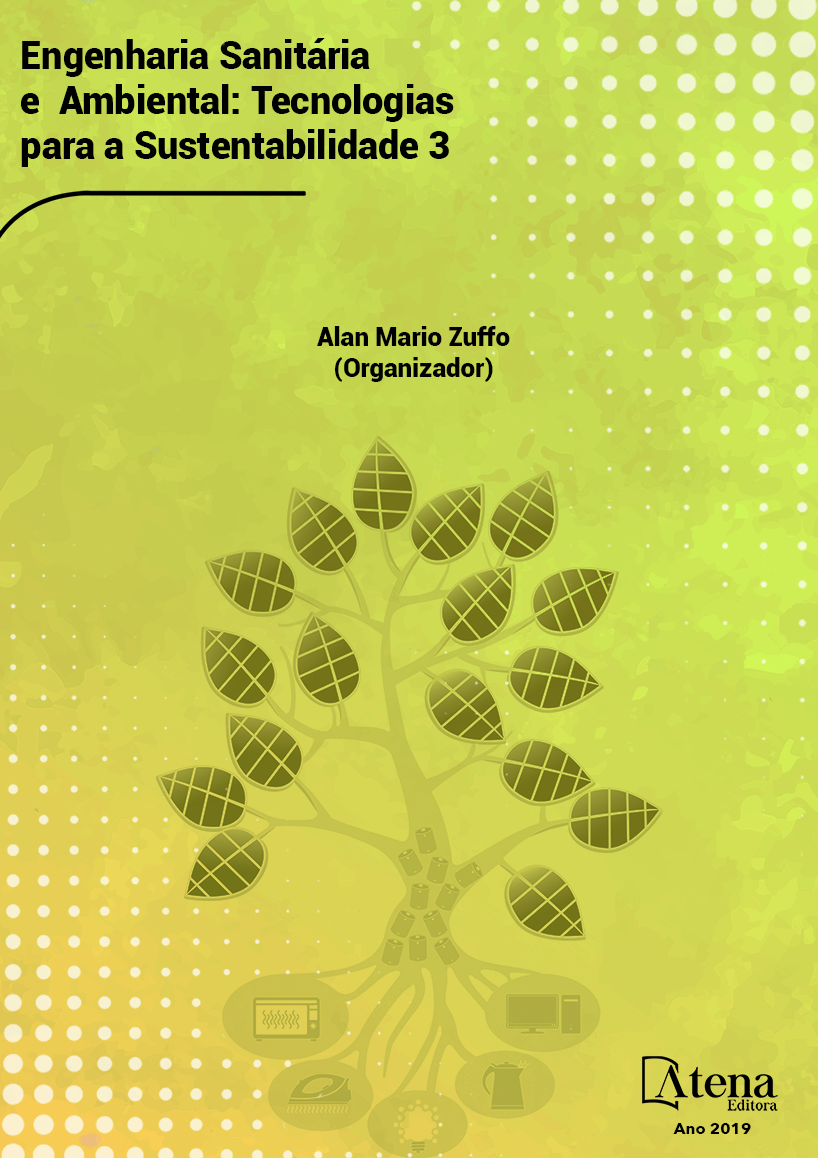
ESTUDO SOBRE IMPLEMENTAÇÃO DE UM SISTEMA DE CAPTAÇÃO DE ÁGUAS PLUVIAIS EM UMA INSTITUIÇÃO DE ENSINO
Atualmente, a escassez de água
é o problema que mais ganha notoriedade
devido à demanda do uso inconsciente. Uma
vez que se deve manter a preocupação com as
gerações atuais e futuras, mecanismos de uso
e reuso da água devem ser adotados a fim de
reduzir a degradação ao meio ambiente. Uma
das opções do ponto de vista sustentável é a
captação das águas da chuva. Sendo assim,
esse trabalho tem por objetivo por intuito realizar
uma proposta de implantação de um sistema de
captação e aproveitamento de água da chuva
para fins não potáveis em uma Instituição de
Ensino Superior (IES). Para tanto, foi realizado
um estudo da análise pluviométrica da região,
esses dados foram usados para dimensionar as
cisternas de armazenamento. Com o intuito de
entrever os usos finais da água, foi realizado um
levantamento de dados com relação à população
total da instituição, faturas de consumos da
água e medições das vazões das bacias
sanitárias Os cálculos para dimensionamento
dos volumes dos reservatórios apontaram um
volume de 56 m³ como ideal para a cisterna e
para o reservatório de descarte, 2 m³, ambos
os volumes serão balanceados nos sistemas
presentes nas extremidades da instituição.
Além disso, o prédio já conta com calhas de
seção retangular e 28 tubos de descidas para
escoamento da água, minimizando assim os
custos de implemntação. Os dados mostraram
ainda que existe uma diferença de 118 mm
entre a precipitação do mês mais seco e mais
chuvoso, sendo junho o mais seco com 41 mm
e dezembro o mês com maior precipitação: uma
média de 159 mm. Os estudos pluviométricos
mostram que o volume de chuva anual da região
é satisfatório, tornando o projeto viável. No entanto, os meses compreendidos entre
janeiro e fevereiro, são os meses cujo consumo de água são menores e a captação
maior. Isso se deve ao período de férias acadêmicas/escolares. Sendo assim, o
armazenamento é a forma mais viável de reaproveitamento da água e este deve atender
aos requisitos estabelecidos pela NBR 15527, com os procedimentos adequados para
que a água esteja própria para o reuso, essas podem ser armazenadas por até um
ano, podendo ser utilizado em períodos de maior estiagem.
ESTUDO SOBRE IMPLEMENTAÇÃO DE UM SISTEMA DE CAPTAÇÃO DE ÁGUAS PLUVIAIS EM UMA INSTITUIÇÃO DE ENSINO
-
DOI: 10.22533/at.ed.51719110416
-
Palavras-chave: ATENA
-
Keywords: Atena
-
Abstract:
Currently, water scarcity is the problem that earns more notoriety due to
the demand for unconscious use. Since concern about current and future generations
should be maintained, water use and reuse mechanisms should be adopted to reduce
degradation to the environment. One of the options from the sustainable point of
view is the capture of rainwater. Therefore, the objective of this work is to carry out a
proposal for the implementation of a system for capturing and utilizing rainwater for
non-potable purposes in a Higher Education Institution (HEI). For that, a study of the
pluviometric analysis of the region was carried out, these data were used to size the
storage cisterns. In order to visualize the end uses of the water, a data collection was
carried out in relation to the total population of the institution, bills of consumption of the
water and measurements of the flows of the sanitary basins. The calculations for sizing
of the volumes of the reservoirs indicated a volume of 56 m³ as ideal for the cistern and
for the disposal tank, 2 m³, both volumes will be balanced in the systems present at
the extremities of the institution. In addition, the building already has rectilinear section
rails and 28 downflow pipes to drain the water, thus minimizing implementation costs.
The data also showed that there is a difference of 118 mm between the driest and
rainiest months, with June being the driest with 41 mm and December with the highest
precipitation: an average of 159 mm. Rainfall studies show that the region’s annual rainfall
is satisfactory, making the project feasible. However, the months between January and
February are the months whose water consumption is lower and the uptake is greater.
This is due to the academic / scholastic vacation period. Therefore, storage is the most
feasible form of reuse of water and it must meet the requirements established by NBR
15527, with adequate procedures to ensure that the water is suitable for reuse, these
can be stored for up to one year and can be used in periods of greater drought.
-
Número de páginas: 15
- Guilherme de Souza Barrucho
- Juliana Toledo Cota
- Giselle Martins Machado
- José Antônio Lins Pereira
- Michaelle Cristina Barbosa Pinheiro Campos
- Ilana Pereira da Costa Cunha
- Andréia Boechat Delatorre


